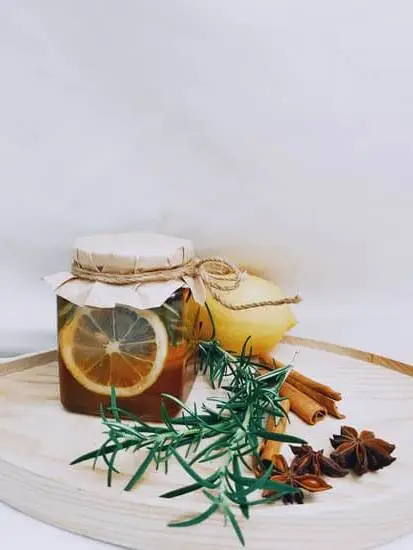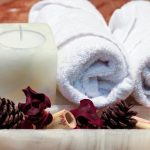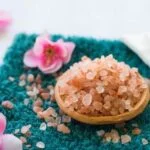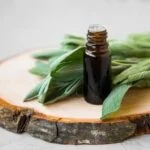Are you interested in learning how to use aromatherapy oil diffuser? Aromatherapy has been used for centuries as a natural way to promote physical and mental well-being. It involves using essential oils extracted from plants to improve health and mood. One popular way to enjoy the benefits of aromatherapy is by using an oil diffuser. In this article, we will explore the concept of aromatherapy and the benefits of using an oil diffuser for it.
Aromatherapy is a holistic healing treatment that uses natural plant extracts to promote health and well-being. These essential oils can be inhaled, applied topically, or used for massage therapy. Using an oil diffuser is an effective way to enjoy the aromatic and therapeutic benefits of these essential oils. A diffuser disperses the oils into the air, filling the room with a pleasant fragrance while also providing various health benefits.
The use of an oil diffuser offers numerous advantages, such as promoting relaxation, improving sleep quality, reducing stress, boosting immunity, and enhancing mental clarity. The diffusion of essential oils can also purify the air and eliminate airborne bacteria and viruses.
With proper use of an oil diffuser, one can experience these benefits in their daily life. In this article, we will provide a comprehensive guide on how to choose the right aromatherapy oil, set up the diffuser, understand its types, use it properly for maximum benefits, practice safety precautions while using it, and maintain and clean it for optimal performance.
Choosing the Right Aromatherapy Oil
When it comes to choosing the right aromatherapy oil for your oil diffuser, there are a wide variety of essential oils to choose from, each with its own specific benefits and uses. It’s important to consider your personal preferences, as well as the desired effects you hope to achieve through aromatherapy. Here are some popular essential oils and their specific benefits:
Lavender Oil
Lavender oil is well-known for its calming and relaxing properties, making it an excellent choice for reducing stress and anxiety. It can also promote better sleep and alleviate headaches.
Peppermint Oil
Peppermint oil has invigorating and energizing properties, making it a great choice for improving focus and mental clarity. It can also help relieve nausea and soothe sore muscles.
Eucalyptus Oil
Eucalyptus oil is commonly used for respiratory health, as it can help clear nasal congestion and support overall respiratory function. Its cooling and refreshing scent can also help invigorate the mind.
Tea Tree Oil
Tea tree oil is often used for its antimicrobial and antiseptic properties, making it a great choice for purifying the air in your environment. It can also be beneficial for supporting skin health.
When choosing an essential oil for your aromatherapy oil diffuser, it’s important to consider any potential allergies or sensitivities you may have. Additionally, always ensure that you are using high-quality, pure essential oils to maximize the benefits of aromatherapy in your home or office.
It’s important to note that some essential oils should not be used around pets or children under certain circumstances. Always research any potential risks before using an essential oil in your diffuser. Different oils have different properties thus affecting people differently depending on age or medical conditions of each person how weak his immune system is prevalent.
For beginners who want to experience what aromatherapy has got to offer should ask questions on how they should use different types of oil without side effects onBinders first before trying them out in their diffusers.
Setting Up the Diffuser
When it comes to using an aromatherapy oil diffuser, it’s important to properly set it up in order to ensure its effectiveness. Here is a step-by-step guide on how to assemble and prepare the oil diffuser for use:
1. Choose a Suitable Location: Select a flat, stable surface for your diffuser that is close to a power outlet. Make sure there is enough space around the diffuser for proper airflow.
2. Add Water: Fill the water reservoir of your oil diffuser with clean, room temperature water. Be sure not to exceed the maximum fill line marked on the reservoir.
3. Add Essential Oil: Now it’s time to add your chosen essential oil to the water. Different essential oils have different benefits, so be mindful of what effect you want when choosing an essential oil.
4. Replace Cover and Plug In: Once you’ve added water and essential oils, replace the cover of the diffuser securely and plug in the power cord.
To get started, here’s a simple step-by-step guide on how to use an aromatherapy oil diffuser:
Take note that different types of oil diffusers may have varying assembly steps, so always refer to the manufacturer’s instructions for specific details.
Understanding the Different Types of Oil Diffusers
Aromatherapy oil diffusers come in different types, each with its unique features and benefits. Understanding the differences between ultrasonic, nebulizing, and heat diffusers can help you choose the right one for your aromatherapy needs.
Ultrasonic Diffusers
Ultrasonic diffusers are popular for their ability to disperse essential oils into the air as a fine mist. These diffusers work by vibrating water at a high frequency to create a mist that carries the essential oils into the air. This type of diffuser is also known for its humidifying effect, making it ideal for use in dry environments. Ultrasonic diffusers are easy to use and often come with timer settings and color-changing LED lights for added ambiance.
Nebulizing Diffusers
Nebulizing diffusers are considered one of the most powerful types of oil diffusers. They work by using pressurized air to atomize the essential oils into tiny particles that are then released into the air in concentrated form. Nebulizing diffusers do not require water or heat, which means they preserve the therapeutic properties of the essential oils. These diffusers are ideal for large spaces and provide a strong aroma that can quickly fill a room.
Heat Diffusers
Heat diffusers, also known as electric or candle-powered diffusers, use heat to evaporate the essential oils and disperse their aroma into the air. While they are simple to use and often more affordable than other types of diffusers, heat diffusers may alter the chemical composition of some essential oils due to high temperatures. They are best suited for small rooms or personal use, such as on a desk or bedside table.
Understanding the differences between these types of oil diffusers will guide you in selecting the one that best fits your preferences and needs when incorporating aromatherapy into your daily wellness routine.
Using the Oil Diffuser
Using an aromatherapy oil diffuser can be a great way to enjoy the benefits of essential oils in your home or workspace. Whether you’re looking to relax, improve your mood, or alleviate certain health issues, using an oil diffuser can help you achieve those goals. In this section, we will provide detailed instructions on how to properly use the oil diffuser for maximum benefits.
First, it’s important to choose the right essential oil for your needs. Different essential oils offer different benefits, so it’s important to choose one that aligns with your specific goals. For example, lavender essential oil is known for its calming and relaxing properties, while peppermint essential oil is often used for its energizing and invigorating effects.
Once you’ve chosen the right essential oil, it’s time to set up the diffuser. Most oil diffusers are easy to assemble and use – simply add water and a few drops of your chosen essential oil to the reservoir, then turn on the diffuser according to the manufacturer’s instructions. Some diffusers may also have additional features such as color-changing lights or timer settings.
After setting up the diffuser, allow it to run for a designated amount of time in order for the scent of the essential oils to disperse properly in the air. It’s important not to overdo it with essential oils – a few drops are usually sufficient for most rooms.
Be sure to follow safety precautions provided by the manufacturer and never leave an active diffuser unattended. Regular maintenance and cleaning is also crucial to ensure optimal performance and longevity of your oil diffuser.
| Benefits | Examples |
|---|---|
| Calming and Relaxing | Lavender Essential Oil |
| Energizing and Invigorating | Peppermint Essential Oil |
Safety Tips
Using an aromatherapy oil diffuser can be a great way to enjoy the benefits of essential oils in a safe and effective manner. However, it’s important to keep in mind some safety precautions to ensure that you have a positive and worry-free experience with your oil diffuser. Here are some important safety tips to consider when using an oil diffuser:
- Use pure essential oils: When using an oil diffuser, make sure to use high-quality, pure essential oils. Avoid using synthetic or diluted oils as they may not only be less effective but could also pose health risks when inhaled.
- Keep the diffuser clean: Regularly cleaning your oil diffuser is essential for maintaining its performance and preventing the buildup of mold and bacteria. Follow the manufacturer’s instructions for cleaning and maintenance to ensure the longevity of your device.
- Avoid prolonged exposure: While aromatherapy can offer numerous benefits, it’s important to practice moderation. Prolonged exposure to strong or concentrated essential oils through a diffuser can potentially cause irritation or sensitization, particularly for those with respiratory conditions or allergies.
In addition to these safety tips, it’s important to place your oil diffuser on a stable surface, away from children and pets, and never leave it unattended while in use. By following these safety precautions, you can enjoy the benefits of aromatherapy with peace of mind.
Remember that while using aromatherapy oil diffusers at home provides relaxation for many people, certain individuals might have sensitivities or allergic reactions due to the exposure of scent molecules even if they are natural tree products like cedarwood and pine scents.
In summary, by choosing high-quality essential oils, keeping your oil diffuser clean, practicing moderation in use, and taking necessary precautions, you can safely enjoy the therapeutic benefits of aromatherapy in your own home.
Maintenance and Cleaning
Using an aromatherapy oil diffuser is a great way to enjoy the benefits of essential oils and improve your overall well-being. To ensure that your oil diffuser continues to work effectively, it is important to maintain and clean it regularly. Here are some tips on how to clean and maintain your oil diffuser for optimal performance and longevity:
1. Regular cleaning: It is important to clean your oil diffuser after every use. This will prevent the build-up of essential oils and keep the diffuser functioning properly. Use a soft, damp cloth to wipe down the inside and outside of the diffuser. Be sure to also clean the ultrasonic plate or nebulizing element according to the manufacturer’s instructions.
2. Deep cleaning: In addition to regular cleaning, it is recommended to perform a deep clean of your oil diffuser at least once a month. To do this, fill the reservoir with water and add a few drops of white vinegar. Let the solution sit for about 5-10 minutes, then empty the reservoir and wipe it down with a soft cloth. This will help remove any residue or build-up from essential oils.
3. Maintenance tips: Proper maintenance of your oil diffuser can extend its lifespan and ensure that it continues to work effectively. Be sure to follow the manufacturer’s guidelines for changing any filters or parts as needed. Additionally, store your oil diffuser in a cool, dry place when not in use to prevent damage.
By following these maintenance and cleaning tips, you can ensure that your aromatherapy oil diffuser remains in good working condition for years to come. Remember that regular maintenance is key to getting the most out of your oil diffuser and enjoying all the benefits of aromatherapy in your home.
Conclusion
In conclusion, the use of an oil diffuser for aromatherapy purposes can significantly enhance one’s physical and emotional well-being. By carefully choosing the right aromatherapy oil and setting up the diffuser correctly, individuals can experience a range of benefits such as stress relief, improved sleep, and enhanced mood. Understanding the different types of oil diffusers and how to use them properly is essential for maximizing the therapeutic effects of essential oils.
One important aspect to highlight is that using an oil diffuser provides a safe and convenient way to enjoy the benefits of aromatherapy at home or in any personal space. With proper maintenance and cleaning, an oil diffuser can continue to provide optimal performance and longevity. It is crucial to follow safety tips when using an oil diffuser to prevent any potential hazards and ensure a positive experience with aromatherapy.
Ultimately, incorporating the use of an oil diffuser into one’s wellness routine can offer a wide range of physical and emotional benefits. From stress reduction to improved sleep quality, the practice of aromatherapy has been proven effective in promoting overall well-being. By understanding how to use an aromatherapy oil diffuser effectively, individuals can harness the power of essential oils for their health and self-care needs.
Frequently Asked Questions
How Do You Use Aromatherapy Diffuser?
Aromatherapy diffusers are used by adding water and a few drops of essential oils to the reservoir, then turning the diffuser on. The device will then disperse a fine mist of the oil and water mixture into the air, filling the room with the scent of the chosen oil.
How Long Do You Leave Essential Oils in a Diffuser?
The length of time you leave essential oils in a diffuser depends on personal preference and the size of the room. For most standard-sized rooms, running a diffuser for about 30 minutes to an hour is sufficient to fill the space with the aroma.
It’s important not to leave it running indefinitely, as this can lead to over-exposure.
How Many Drops of Oil Do I Put in My Diffuser?
When using an aromatherapy diffuser, it’s typically recommended to add 3-5 drops of essential oil for every 100ml of water in the reservoir. This ratio provides a pleasant and subtle scent without overpowering the room. However, some stronger oils may require fewer drops, while lighter oils may need slightly more to achieve the desired fragrance level.

Are you looking for a natural way to improve your health and wellbeing?
If so, aromatherapy may be the answer for you.





